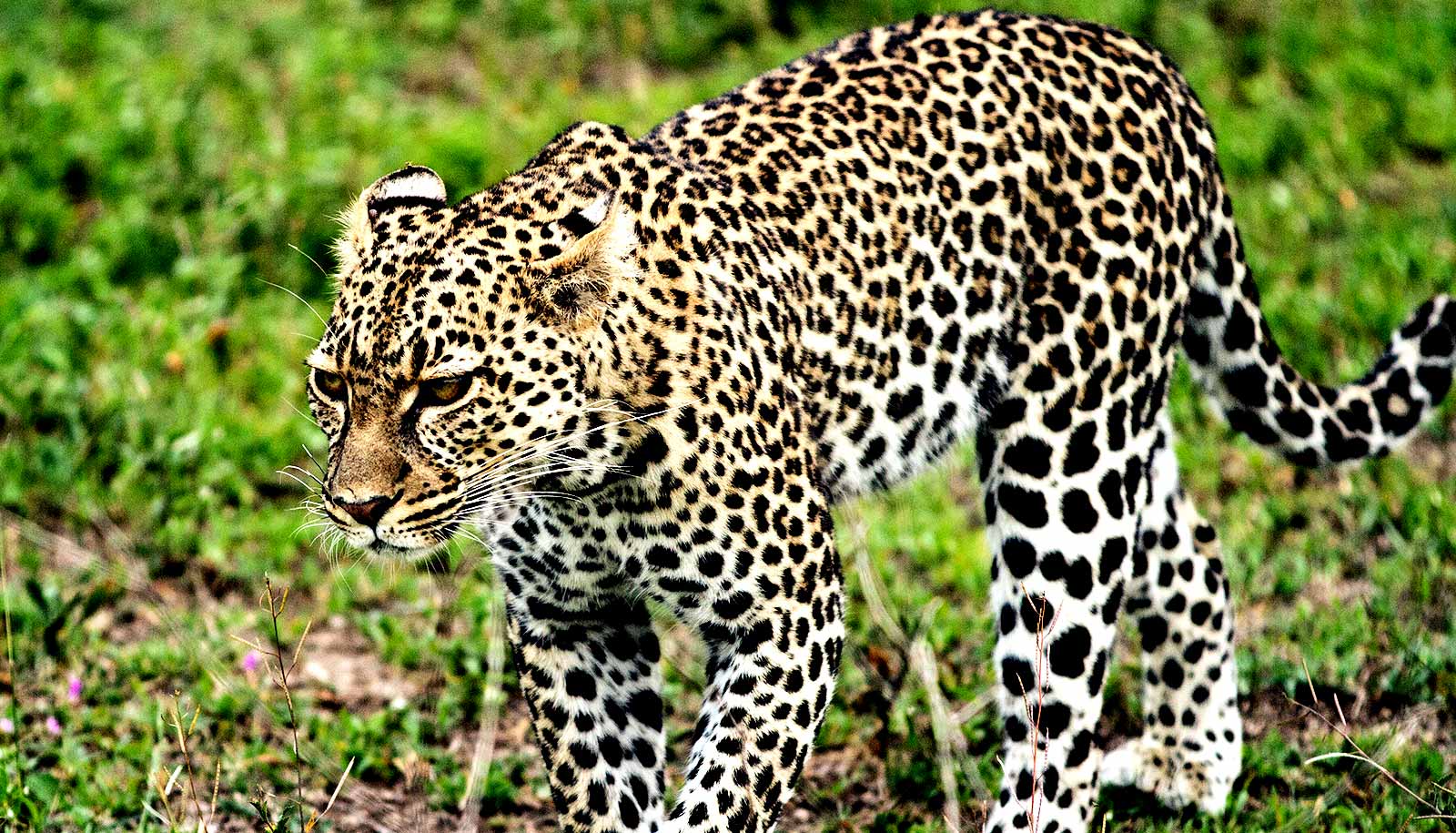
Female leopards are early birds, males are night owls
by Michael Skov Jensen-CopenhagenA new study shows that female and male leopards are active at very different times of the day.
The discovery contradicts previous assumptions about when leopards are most active and could help protect the endangered feline, whose populations have dwindled by 85% over the past century.
Tanzania’s Udzungwa Mountains are carpeted by dense rainforest, making the area impossible to reach by jeep or other vehicles. As such, the leopards in this area have never been subject to the prying eyes of researchers. Until now.
Researcher set up 164 game camera traps in the Tanzania’s Udzungwa Mountains, collecting more than 5,000 days of footage.

“I’m the first person to study leopards in this area, simply because it is so inaccessible. It took several pairs of good hiking boots, let me put it that way,” says Rasmus W. Havmøller of the National Museum of Denmark. Havmøller never actually got to see one of the shy leopards with his own eyes. Instead, he had to settle for buffalo and elephants.
While Havmøller never caught a glimpse of a leopard himself, his camera traps most certainly did. Using motion sensors, the cameras captured leopards, forest antelopes, baboons, and other leopard prey on film. Camera observations revealed leopard behavior that contradicts previous assumptions.
“In the past, leopards were thought to be most active at dusk. Very surprisingly, the study shows that leopards hunt and move around at very different times of the day depending on whether they are females or males,” says Havmøller, “Females are typically active from early through late morning, and then a bit before sunset, while males only really wake up at night.”
This is the first time that differences in activity patterns between male and female leopards have been studied.
Researchers have only recently begun to study differences between male and female leopards, so there is still much to learn about the animal. But researchers need to hurry. Rapidly growing human populations in Africa and India pose the greatest threat to these animals, forcing them from their habitats and shooting them when they near livestock.
“Globally, things are going awfully for leopards, with sharp declines in their populations over the past 100 years. Furthermore, these animals aren’t monitored all that well. In part, this is because it is difficult. But also, because there has been a greater focus on species that are even more endangered, including lions, tigers, and cheetahs.
“Therefore, it might be that the leopards in Udzungwa present the last chance to study these creatures in a diversified environment, one that has only been lightly impacted by humans, before they end up becoming highly endangered,” Havmøller says.
Havmøller believes that the findings will provide a better understanding of the lives of wild leopards—an understanding that may help prevent their complete extinction.
“The fact that female leopards are active well into the morning makes them more vulnerable to human activities, since this is when we as humans are most active. To protect something, one needs to have some knowledge about it,” Havmøller says.
“During my study, we also discovered that a leopard from the rainforest doesn’t move into semi-arid areas or onto the savannah, or vice versa. It’s very strange. Why they don’t is the next big question.”
The paper appears in the Journal of Zoology.
Source: University of Copenhagen